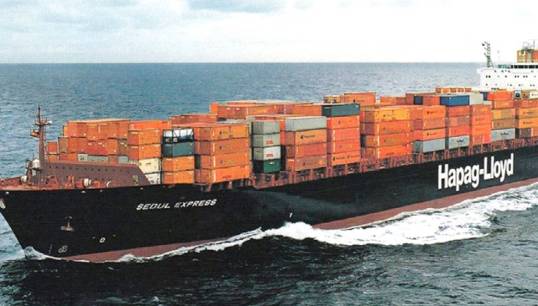- Topics
- Campaigning
- Careers
- Colleges
- Community
- Education and training
- Environment
- Equality
- Federation
- General secretary message
- Government
- Health and safety
- History
- Industrial
- International
- Law
- Members at work
- Nautilus news
- Nautilus partnerships
- Netherlands
- Open days
- Opinion
- Organising
- Switzerland
- Technology
- Ukraine
- United Kingdom
- Welfare

A damning report on a fatal accident onboard a containership has called for sweeping changes in the rules governing safe access to cargo holds and rescues from enclosed spaces, while also raising concerns about obesity among seafarers. Andrew Linington reports
A German Accident Investigation Board (BSU) report covering the death of a seafarer onboard the 4,80TEU containership Seoul Express in March 2021 has highlighted the ways in which obesity may threaten the safety of those at sea and prevent them from using lifesaving and rescue equipment.
The seafarer died after falling from a vertical cargo hold ladder while checking the temperature of dangerous goods containers.
Investigators said he had gained 11kg in weight since a medical in 2018, with a post-mortem finding that he weighed 107kg and had a Body Mass Index of 40.3 at the time of the accident – which would have meant he was unfit for service at sea under German rules.
Although the investigation found no evidence that the seafarer's weight compromised his daily work or led to the fall, the report points out that obesity can cause problems in moving, working in or evacuating from confined spaces, using narrow and steep companionways, and using lifesaving or firefighting equipment. It also notes that problems with evacuating obese or extremely heavy crew members in an emergency had been highlighted in an investigation into an engine room fire onboard a multipurpose ship in 2019.
The BSU pointed to research showing that working at sea poses a significantly heightened risk of weight gain, which is associated with irregular mealtimes, inadequate nutrition, limited exercise opportunities, and high occupational stress.
It also warned that 'BMI-related rules for fitness for service at sea and resulting upper limits for body weight and stature are partly in conflict with the technical specifications and rules concerning safe operation of the ship and all her equipment. Depending on body size and stature, even non-obese seafarers may exceed the maximum weight permitted for personal and general lifesaving appliances and PPE'.
Investigators noted that slips, trips and falls account for more than one-third of all seafarer accidents and almost one-quarter of accidents occur in cargo holds, spaces and tanks. 'On board the Seoul Express and on comparable containerships, the need to use long vertical ladders in cargo holds several times a day also increases the probability of a fall,' the report adds.
These inherent risks are exacerbated by the absence of uniform design requirements for cargo hold ladders, it stresses. The lack of requirements for ladders to be fitted with fixed guides for fall arresters and the absence of suitable anchor points for personal protective equipment against falls and rescue appliances in the area of the cargo hold companionway 'complicate the practical use of PPE, on the one hand, and the safe rescue of a casualty from the cargo hold, on the other,' the report warns.
Noting that the crew had to improvise the rescue with a rope and snatch block, the report adds: 'The lack of special lifesaving appliances and appropriate anchor points made it difficult to evacuate the casualty from the cargo hold and exposed several people involved to a greater risk.'
The report makes a series of recommendations to improve safety, including a call for the IMO to require the mandatory installation of stairways or inclined ladders with handrails instead of long vertical ladders in the cargo holds of new containerships and to increase the size of hatches, companionways and passageways to enable the safe evacuation of casualties on stretchers. It also urges the German transport ministry to develop proposals for the international standardisation of PPE against falls from a height.
Tags
More articles
Seafarer feedback sought on crew health and maritime safety data trackers
The Seafarers Hospital Society is seeking feedback from seafarers, on its most recent research aimed at improving crew health and maritime safety.
Yacht battery blaze sparks further fire safety concerns
Calls for action after lifeboat abandoned during training exercise
Calls for European and international action to tackle survival craft safety have been made following an incident in which an enclosed lifeboat heeled over during a training exercise.
